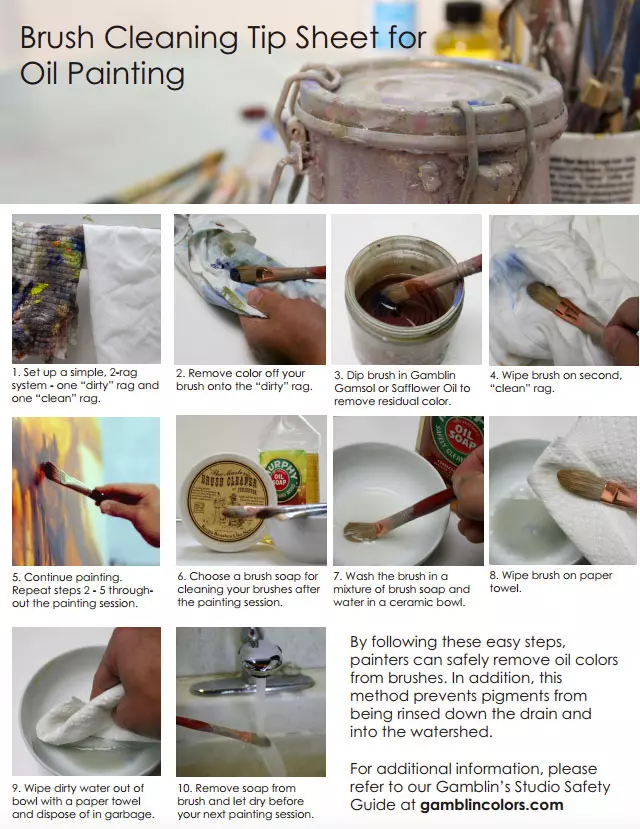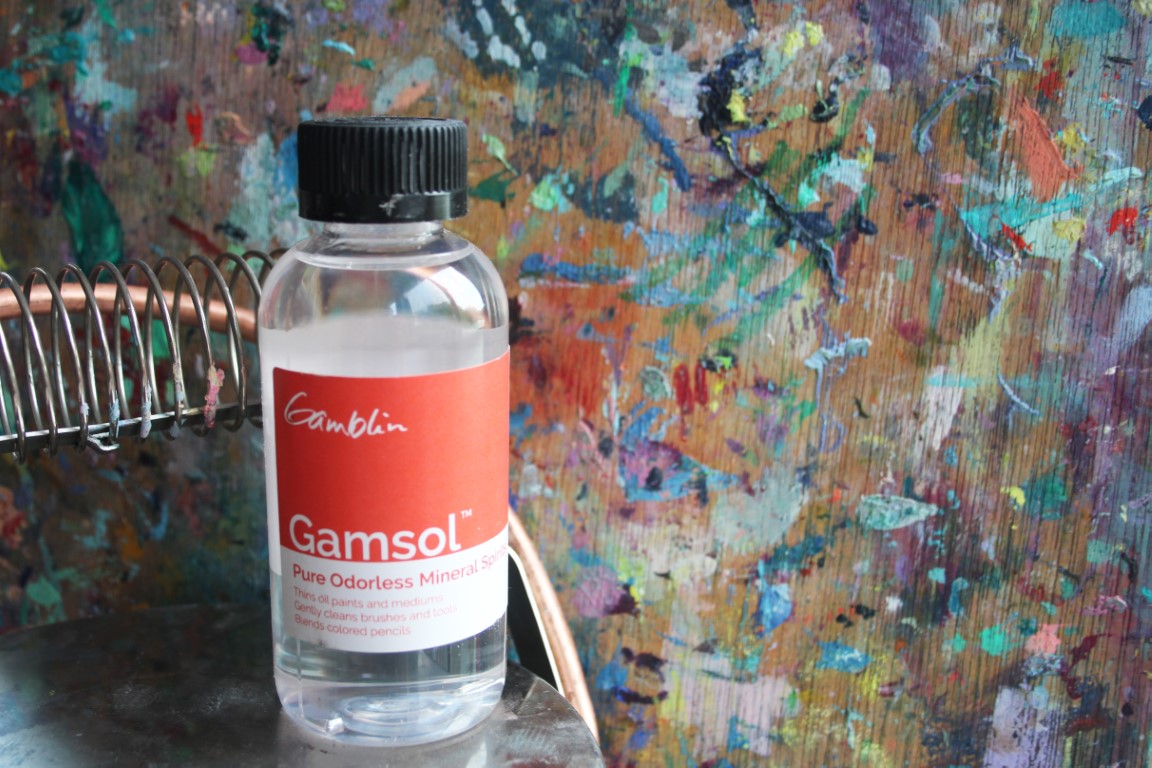Brush Care
- Avoid dipping a dry brush into oil paint. For natural hair brushes, first, dip the brush into painting medium. This distributes the natural oils of the brush hairs and allows each hair to load properly with paint.
- Different levels of the painting require different types of brush hair.
- Underpainting: Bristle or Synthetic: Requires vigorous brush strokes that have contact with the substrate (panel or canvas). Brush hairs get abraded through friction. Detail not as important. Avoid using expensive brushes or brushes with an extended point for mixing or scumbling paint. Use a palette knife for color mixing. Use an old or less expensive brush for scumbling.
- Middle layers: Bristle, High-Quality Synthetic, Mongoose
- Top layers: Sable, Mongoose, Bristle, High-Quality Synthetic. The final layer is seen the most. Detail and sensitivity most important
- Use one brush for white colors, one for yellows, one for reds, one for blues and greens.
- Each time you wash a natural hair brush you remove natural oils from the brush hairs that need to be replaced. Two to three times a year squeeze a small amount of brush conditioner into the palm of your hand and roll the brush in it. Then rinse well. Reshape the brush by hand into its original shape and dry with clean cloth or paper towel.
Brush Drying and Storage
- Brushes should be dried in a horizontal position or in a suspended vertical position with tips down. If left to dry in an upright position with the hair ends up, excess moisture runs down into the ferrule causing swelling of the wood handle and chipping it of its enamel finish.
- Do not leave brushes soaking overnight with the brush resting on its end. This will bend the brush hairs or bristles, permanently altering the shape of the brush. It also causes the wooden handle to swell, crack and possibly loosen the ferrule.
- Store brushes upright in a ventilated room. Brush hairs must breathe or they might eventually attract mold. Do not leave brushes in direct sunlight. Do not leave in an environment that has moths.
- Keep handles dry to prevent cracking or loosening of the ferrule.
Brush Cleaning
- Avoid letting paint dry in a brush. The paint will dry in the heel of the brush near the ferrule, making it difficult to be removed. This will cause the brush to lose its shape, brush hairs will fan out, and eventually, the brush will be unable to be used.
- Do not use lacquer thinner, shellac remover or acetone to clean brushes. These solvents can dissolve the glues, which hold the brush hairs in place.
Download Brush Cleaning Tip Sheet for Oil Painting


